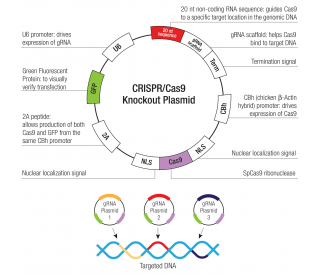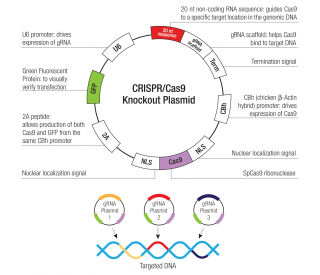详细说明
Species Reactivity
Mouse
Specificity
Detects mouse ACE-2 in direct ELISAs and Western blots. In direct ELISAs and Western blots, 25‑75% cross-reactivity with recombinant human ACE-2 is observed and no cross-reactivity with recombinant mouse ACE-1 is observed.
Source
Monoclonal Rat IgG 2B Clone # 460502
Purification
Protein A or G purified from hybridoma culture supernatant
Immunogen
Chinese hamster ovary cell line CHO-derived recombinant mouse ACE-2
Gln18-Thr740 (predicted)
Accession # Q8R0I0Formulation
Lyophilized from a 0.2 μm filtered solution in PBS with Trehalose. *Small pack size (SP) is supplied as a 0.2 µm filtered solution in PBS.
Label
Unconjugated
Applications
Recommended
ConcentrationSample
Western Blot
1 µg/mL
Recombinant Mouse ACE‑2 (Catalog # )
Please Note: Optimal dilutions should be determined by each laboratory for each application. are available in the Technical Information section on our website.
Preparation and Storage
Reconstitution
Reconstitute at 0.5 mg/mL in sterile PBS.
Shipping
The product is shipped at ambient temperature. Upon receipt, store it immediately at the temperature recommended below. *Small pack size (SP) is shipped with polar packs. Upon receipt, store it immediately at -20 to -70 °C
Stability & Storage
Use a manual defrost freezer and avoid repeated freeze-thaw cycles.
12 months from date of receipt, -20 to -70 °C as supplied.
1 month, 2 to 8 °C under sterile conditions after reconstitution.
6 months, -20 to -70 °C under sterile conditions after reconstitution.
Background: ACE-2
ACE-2, also called ACEH (ACE homologue), is an integral membrane protein and a zinc metalloprotease of the ACE family that also includes somatic and germinal ACE (1). Mouse ACE-2 has about 40% amino acid identity to the N- and C-terminal domains of mouse somatic ACE. The predicted mouse ACE-2 protein sequence consists of 798 amino acids, including a N-terminal signal peptide, a single catalytic domain, a C-terminal membrane anchor, and a short cytoplasmic tail. ACE-2 cleaves angiotensins I and II as a carboxypeptidase. ACE-2 mRNA is found at high levels in testis, kidney and heart and at moderate levels in colon, small intestine and ovary. Classical ACE inhibitors such as captopril and lisinopril do not inhibit ACE-2 activity. Novel peptide inhibitors of ACE-2 do not inhibit ACE activity (2). Genetic data from Drosophila, mice and rats show that ACE-2 is an essential regulator of heart function in vivo (3). In addition, ACE-2 is a key SARS-CoV Spike protein receptor in vivo and has a critical function in acute lung injury (4, 5).
References:
Tipnis, S.R. et al. (2000) J. Biol. Chem. 275:33238.
Crackower, M.A. et al. (2002) Nature 417:822.
Huang, L. et al. (2003) J. Biol. Chem. 278:15532.
Kuba, K. et al. (2005) Nature Med. 11:875.
Ima, Y. et al. (2005) Nature 436:112.
Long Name:
Angiotensin I Converting Enzyme 2
Entrez Gene IDs:
59272 (Human); 70008 (Mouse); 302668 (Rat)
Alternate Names:
ACE2; ACE-2; ACEH; ACEHangiotensin I converting enzyme 2; ACE-related carboxypeptidase; angiotensin I converting enzyme (peptidyl-dipeptidase A) 2; angiotensin-converting enzyme 2; Angiotensin-converting enzyme homolog; DKFZp434A014; EC 3.4.17; EC 3.4.17.23; Metalloprotease MPROT15







![Anti-CARD11 antibody [EPR2557] 100µl](https://yunshiji.oss-cn-shenzhen.aliyuncs.com/202407/25/ryuecwsu03m.jpg)
![Anti-CARD11 antibody [EPR2557] 40µl](https://yunshiji.oss-cn-shenzhen.aliyuncs.com/202407/25/0l4lvuuesv1.jpg)

![Anti-Caspase-9 antibody [E23] 100µl](https://yunshiji.oss-cn-shenzhen.aliyuncs.com/202407/25/3jnd4412gqi.jpg)

![Anti-CKS2 antibody [EPR7946(2)] 100µl](https://yunshiji.oss-cn-shenzhen.aliyuncs.com/202407/25/cfdt44gkqre.jpg)



 粤公网安备44196802000105号
粤公网安备44196802000105号